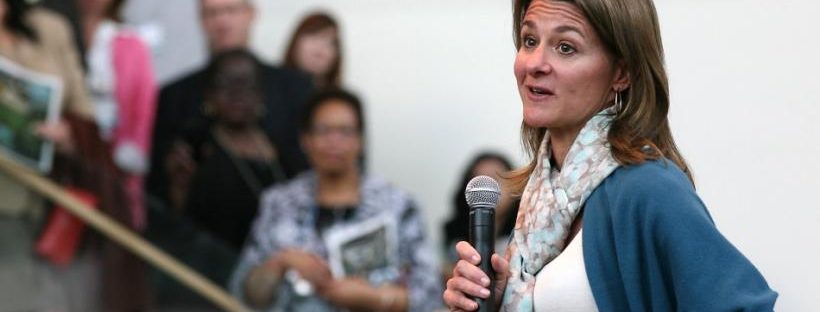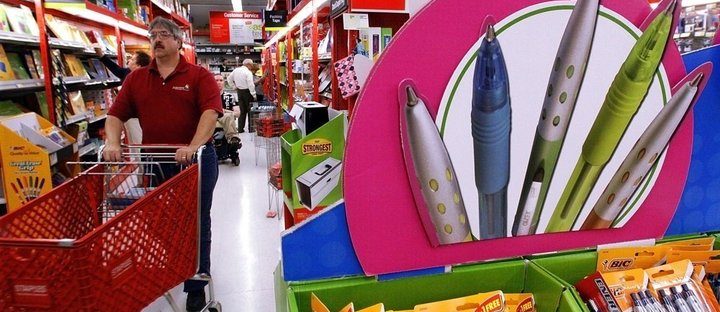More Americans used food stamps to buy their Thanksgiving dinner than any time in our history according to U.S. News & World Report. Forty-two million of us are on food stamps, and the food-stamp program (now called the Supplemental Nutrition Assistance Program, or "SNAP") cost the U.S. government $72 billion last year. This means one … Continue reading The Poor, the Elderly, the Disabled Stand to Lose the Most
Disaster Creates Huge Demand for Survival Supplies for DollarDays
"We had orders for survival supplies even before [Hurricane] Sandy hit the East Coast as people prepared for the worst, and they are still pouring in. The demand for our wholesale Marc Gold fleece blankets is incredible—we continue to ship thousands. "In addition to stay-warm supplies such as jackets, hats and gloves, [items like] flashlights, … Continue reading Disaster Creates Huge Demand for Survival Supplies for DollarDays
Holes in the Safety Net
America’s national safety net of social services is a curious public/private mix supporting the most vulnerable people in our society. It has been clearly pointed out to us this fall that in our current economic crisis, the government will have to be doing less, because the dollars are not there. According to the [National] Council … Continue reading Holes in the Safety Net
Giving is Down, but Caring is Up
[In 2011], the people of the United States were ranked as the most generous in the world in terms of giving time and money to nonprofits, up from fifth place in 2010, according to The L.A. Times. [Approximately] 65% of Americans said they donated money to charity, 43% volunteered their time, and 73% helped a … Continue reading Giving is Down, but Caring is Up
No Nonprofit Should Be Left Behind
Now that the holiday season is over and retailers in general are reporting slightly higher sales than last year, the business community is letting out a shared sigh of relief, because it could have easily gone the other way, continuing the recession we have all been dealing with over the last three years—[a]nd, as USA … Continue reading No Nonprofit Should Be Left Behind
Nonprofits a Loser in All This Mess
Yesterday, July 20, there was an article in The Huffington Post called “Debt Ceiling Standoff Hurts Consumer Confidence.” In The Wall Street Journal today, an article says, “Layoffs Deepen Gloom“ and concludes, “The stepped-up pace of layoffs suggests companies are losing faith in the prospect of a second-half rebound.” Obviously, this is all bad news … Continue reading Nonprofits a Loser in All This Mess
School Supply Giveaway Contest
The Wall Street Journal reported today “For Small Businesses, Recession Isn’t Over.” As a supplier to small businesses of over 140,000 general-merchandise products, we knew the recession wasn’t over months ago, because small businesses are still having trouble getting traffic into their business, [and] those buyers [are spending] less than last year. [O]n top of … Continue reading School Supply Giveaway Contest
Nonprofits Use New Online Wishlist Registry to Request Much-needed Items
Charitable organizations with 501(c)(3) status can now create online wishlists of necessities so donors can buy exactly what their favorite organization needs. DollarDays, a premier Internet-based product wholesaler to small businesses, local distributors and nonprofit organizations, launched the online registry for nonprofits to provide people another way to give to a cause. Similar to a … Continue reading Nonprofits Use New Online Wishlist Registry to Request Much-needed Items
Nonprofit Organizations the Fastest-growing Sector on Top-rated Wholesale Distributor to Small Retailers
Nonprofit organizations are the fastest-growing sector of customers on [the DollarDays website]. [...] Orders from nonprofits—including medical, educational and charitable institutions—are up 147% over the previous year. "Nonprofit organizations are small businesses, and, just like any small business, nonprofit groups need to make their donations go as far as possible," said Marc Joseph, COO of … Continue reading Nonprofit Organizations the Fastest-growing Sector on Top-rated Wholesale Distributor to Small Retailers

